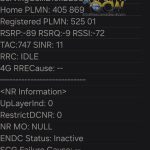The Infocomm Media Development Authority (IMDA) has officially granted spectrum rights in the 700 MHz band to both M1 and StarHub, with the rights taking effect from 1 July 2025. This allocation marks a key step in enhancing mobile network performance, particularly in environments where signal penetration remains challenging.
Why 700 MHz Matters
The 700 MHz band—also referred to as Band 28 (b28) for 4G and n28 for 5G—is prized for its superior signal propagation characteristics. Its lower frequency range allows signals to travel longer distances and penetrate obstacles such as building walls and underground structures more effectively. This translates to improved indoor and subterranean coverage, reduced dead zones, and overall better user experience in urban environments.
Spectrum Allocation Details
- M1’s Allocation:
- Lower Band: 723 MHz – 728 MHz (5 MHz)
- Upper Band: 778 MHz – 783 MHz (5 MHz)
- StarHub’s Allocation:
- Lower Band: 728 MHz – 738 MHz (10 MHz)
- Upper Band: 783 MHz – 793 MHz (10 Mhz)
- Singtel
- Lower Band : 703 MHz – 723 Mhz (20 MHz)
- Upper Band : 758 MHz – 778 MHz (20 MHz)
Deployment Considerations
While the rights are confirmed, it remains to be seen how the spectrum will be deployed. A key consideration is whether M1 and StarHub will utilise the 700 MHz band:
- Contiguously, as a shared n28 block for 5G deployment, which could offer higher throughput and simplified spectrum management; or
- Independently, enhancing their existing 4G Band 28 (b28) networks while progressively rolling out 5G NR (n28) on the same frequency.
Either approach would deliver significant improvements to network coverage and resilience, particularly in dense urban areas and difficult-to-reach locations.



